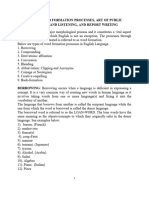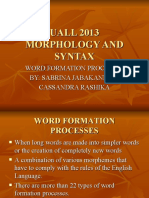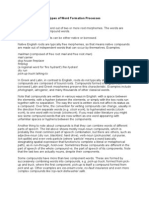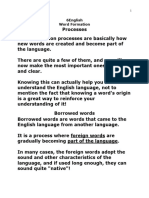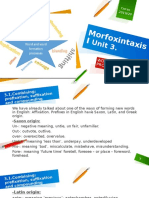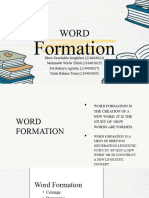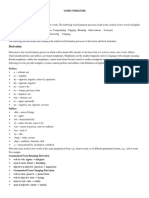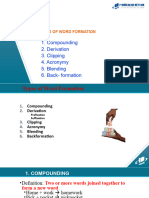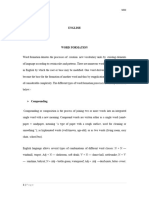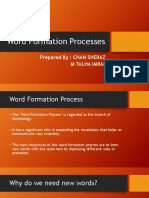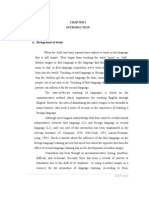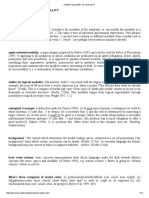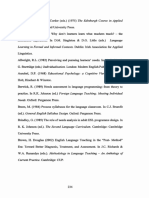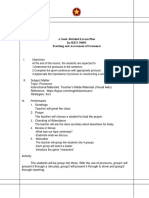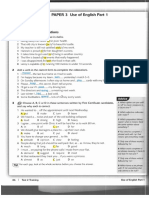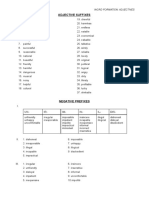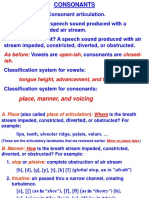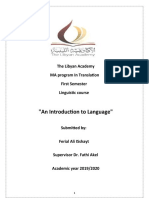0% found this document useful (0 votes)
50 views21 pagesU5 Word Formation 2
This document provides information about word formation processes in English, including compounding, shortening, and conversion.
It discusses compounding in detail, including the definition and specific features of English compounds. Compounds are classified based on their structure, semantics, and parts of speech.
Shortening is defined and classified into clipping/contraction, blending, and acronyms/abbreviations. The types and definitions of each are explained.
Conversion is defined as the process where words extend their grammatical function. The document provides examples of semantic relationships in conversion, such as nouns becoming verbs that denote actions performed by the noun.
Uploaded by
Xuan Mai ĐàmCopyright
© © All Rights Reserved
We take content rights seriously. If you suspect this is your content, claim it here.
Available Formats
Download as PDF, TXT or read online on Scribd
0% found this document useful (0 votes)
50 views21 pagesU5 Word Formation 2
This document provides information about word formation processes in English, including compounding, shortening, and conversion.
It discusses compounding in detail, including the definition and specific features of English compounds. Compounds are classified based on their structure, semantics, and parts of speech.
Shortening is defined and classified into clipping/contraction, blending, and acronyms/abbreviations. The types and definitions of each are explained.
Conversion is defined as the process where words extend their grammatical function. The document provides examples of semantic relationships in conversion, such as nouns becoming verbs that denote actions performed by the noun.
Uploaded by
Xuan Mai ĐàmCopyright
© © All Rights Reserved
We take content rights seriously. If you suspect this is your content, claim it here.
Available Formats
Download as PDF, TXT or read online on Scribd
/ 21
